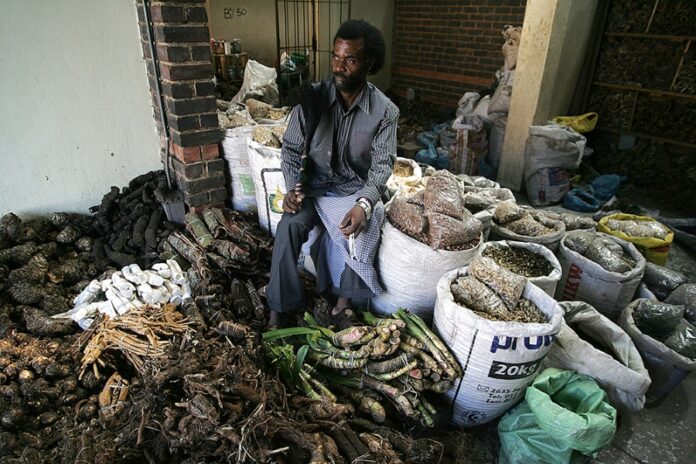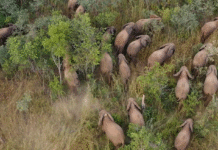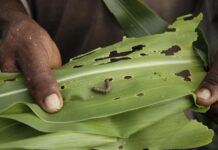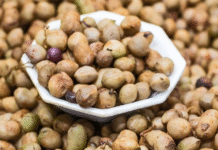Illustrative Image: Traditional Medicinal Animals in Ethiopia: Ethnozoological Practices, Conservation, and Indigenous Healthcare Insights
Image Source & Credit: GGA
Ownership and Usage Policy
A recent study by Lema et al. (2025) titled “Ethnozoological study of traditional medicinal animals used by indigenous people in Ethiopia: a review” published in traditional Medicine Research reveals that indigenous Ethiopian communities rely heavily on medicinal animals for healthcare, with approximately 80% of Ethiopians using traditional medicine.
“
80% of Ethiopians use traditional medicine, heavily relying on medicinal animals for diverse healthcare needs.– Lema et al. 2025
This study is a review of ethnozoological practices in Ethiopia, focusing on the use of traditional medicinal animals by indigenous communities. It explores how different ethnic groups utilize animal species and their by-products to treat various ailments, ranging from infections and wounds to chronic diseases. The study highlights the cultural significance of these practices and emphasizes the urgent need for documentation, as much of the knowledge is passed down orally and is at risk of being lost. Additionally, the study underscores the conservation concerns surrounding medicinal animals, pointing out that while they have been used for centuries, little attention has been paid to their protection. The authors advocates for the preservation of both biodiversity and indigenous knowledge, arguing that such documentation could aid in the development of modern medicine.
How the Study was Conducted
This review-based ethnozoological study compiles and analyzes data from 18 previously published articles on the traditional medicinal use of animals by indigenous communities across Ethiopia. Drawing from open-access scientific journals, the researchers conducted a systematic review of literature—primarily published in the last three years—to document the diversity of medicinal animal species, their therapeutic applications, and the cultural significance of these practices. The investigation spans various Ethiopian regions, including Oromia, Amhara, Tigray, the Southern Nations, Nationalities, and Peoples’ Region (SNNPR), and Benishangul-Gumuz. It highlights a wide array of animal species traditionally used in healing practices, with specific focus on body parts such as skin, bones, bile, and milk. These components are applied using culturally inherited methods for treating various ailments.
What the Authors Found
The authors found that indigenous Ethiopian communities rely heavily on medicinal animals for healthcare, with approximately 80% of Ethiopians using traditional medicine. The authors also revealed that various ethnic groups in Ethiopia use animals and their by-products (such as milk, bones, blood, and bile) to treat ailments including infections, wounds, chronic diseases, and spiritual afflictions. Traditional healing knowledge is passed down orally through generations, often within families. Traditional healers play a central role in preserving and applying these medicinal practices.
Why is this important
Preserving Indigenous Knowledge: Traditional healing practices in Ethiopia have been passed down orally for centuries. Without proper documentation, this valuable knowledge risks being lost. By reviewing and recording ethnozoological practices, the study ensures that future generations can access and learn from these traditions.
Biodiversity Conservation: Many medicinal animal species face threats due to overexploitation and habitat destruction. The study highlights the need for conservation efforts to protect these species, ensuring they remain available for both traditional and potential modern medical applications.
Health Benefits and Modern Medicine: Understanding how indigenous communities use animals for medicinal purposes can provide insights for modern pharmaceuticals. Some animal-based compounds have already contributed to medical advancements, and further research could lead to new treatments.
Cultural and Societal Impact: Traditional healers play a crucial role in Ethiopian communities. By acknowledging their knowledge and contributions, the study fosters respect for indigenous healthcare systems and encourages collaboration between traditional and modern medicine.
Policy Development: The findings of this study can guide policymakers in creating regulations that both protect medicinal animal species and support the integration of traditional medicine into formal healthcare systems.
What the Authors Recommended
- Traditional medicinal knowledge is primarily passed down orally, making it vulnerable to loss. The authors urge systematic documentation of healing practices, medicinal animal species, and their applications to safeguard this knowledge for future generations.
- Overexploitation and habitat destruction threaten medicinal animal species. The study calls for conservation measures, including legal protections, sustainable harvesting practices, and community engagement to prevent species decline.
- The authors advocate for scientific studies on medicinal animals to validate their effectiveness and explore potential applications in modern pharmaceuticals. Integrating traditional medicine with conventional healthcare could enhance treatment options.
- Raising awareness among local communities about the importance of medicinal animal conservation and traditional healing knowledge is crucial. Educational programs can help promote sustainable use and respect for indigenous practices.
- Governments and organizations should develop policies that regulate the use of medicinal animals, ensuring ethical sourcing and protection of endangered species. Establishing guidelines can also support traditional healers in safely practicing their craft.
In conclusion, the study by Lema et al. (2025) provides a vital contribution to the understanding and preservation of Ethiopia’s rich ethnozoological heritage. By highlighting the extensive use of medicinal animals in traditional healthcare systems and the cultural knowledge surrounding them, the research underscores the urgency of documentation, conservation, and integration into modern medicine. Protecting both the biodiversity and the wisdom of indigenous communities not only safeguards cultural identity but also opens new avenues for sustainable healthcare innovations and policy development.
















 The African Research (AR) Index is a comprehensive scholarly directory and database focused explicitly on journal publishers that publish and disseminate African research.
The African Research (AR) Index is a comprehensive scholarly directory and database focused explicitly on journal publishers that publish and disseminate African research.

